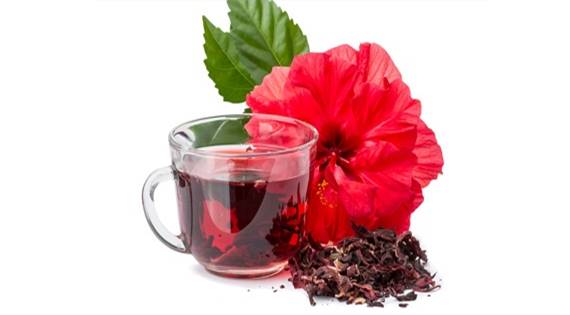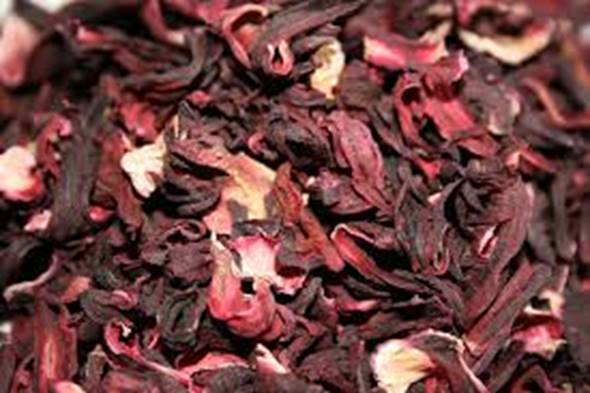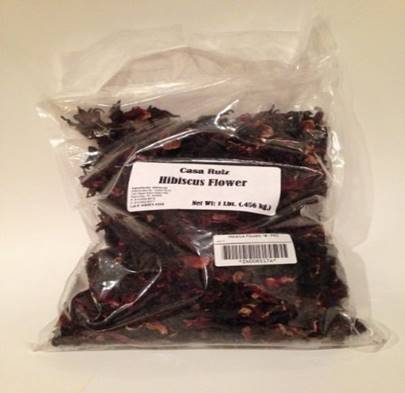
A new natural alternative to antibiotic is born. Recently in my practice as Holistic Medical Practitioner; I have introduced some women with recurrent urinary tract infections to cranberry and Hibiscus capsules. The hibiscus plant is one plant I have conducted extensive research on its medicine purposes. Some were done in the lab and soon will reveal the findings of this plant from the lab and it will be the first ever research conducted in this country on the Hibiscus and these medical conditions.
Urinary Tract infections are disturbing issues to women health and men as well. Urinary tract infections strike across several demographics, ranging from children to the elderly. Research indicates that almost 50 percent of all women during their lifetimes will develop a urinary tract infection (and if they believe in past lives, the odds are even higher). And 1-in-4 women who get a UTI will likely develop another according to the Life Extension Magazine. The good news is that conventional antibiotic is not the only answer and cranberry and hibiscus can impede UTIs.
Traditional medicine, such as trimethoprim, cephalexin, or ciprofloxacin, works as heavy-duty antibiotics to kill bacteria, but these compounds can lead to secondary infections. With persistent usage, antibiotics become less effective because bacteria become immune to the elements, turning UTIs into bothersome visitors who refuse to go.
In this article, I bring you a review analysis of a potent novel alternative to antibiotic. Cranberries and hibiscus form a powerful anti-bacterial posse determined to fight against these Haram.
Extracts from the Hibiscus sabdariffa flower prevent bacteria from adhering to the urinary tract, and a recent six-month study involving forty women with a history of frequent UTIs revealed that the use of hibiscus extract decreased the likeliness of infection by 89 percent.
When hibiscus is used in conjunction with cranberry in pill form (cheaper than pure juice) it is a potent, low-cost natural intervention. And according to professorItzhakOfek, a researcher at Tel Aviv University's Sackler Faculty of Medicine, has positively indicated that cranberries ably combat urinary tract infections.
Lifestyle changes may also be in order. Creating a healthy urinary system is dependant on keeping your salt intake at a minimum, as high sodium elevates blood pressure, which can affect kidney function.
Some experts believe that the hibiscus has a more potent “antimicrobial effect” than cranberry, and that using the two together to fight infection forges a compelling synthesis.
Cranberry
Cranberries contain substances that may be able to treat or prevent UTIs. Cranberry juice and powders made from cranberry extract have been used for decades to prevent or treat UTIs. Originally, it was hypothesized that one of the components in cranberry – quinic acid – increased the levels of a natural antibacterial agent in the urine, known as hippuric acid. However, it is not clear if there is a significant increase in hippuric acid levels in the urine after cranberry consumption (Jepson 2007, 2012).
Evidence suggests that substances known as proanthocyanidins, which are found in cranberries, may interfere with the adhesion of bacteria (particularly E. coli) to the walls of the urinary tract (Jepson 2007, 2012; McMurdo 2005). By preventing E. coli from binding to the urinary tract cells, proanthocyanidins can keep bacteria from fully colonizing and invading the urinary tract. One of the advantages of using cranberry juice or related products is that cranberries are relatively inexpensive, natural, and should not contribute to the growing problem of antibiotic resistance (McMurdo 2005).
One study found that both cranberry juice and cranberry tablets were effective at reducing urinary tract infections (compared to placebo) in women who developed at least one UTI per year. This study also found that cranberry tablets were a more cost-effective option compared to cranberry juice (Stothers 2002). Another study found that consuming cranberry juice three times per day produced a trend towards reducing the incidence of UTIs during pregnancy (Wing 2008). Yet another study compared cranberry extract to low-dose trimethoprim (a commonly used antibiotic) for prevention of recurrent UTIs in older women. This study found that regular use of trimethoprim was only slightly better than 500 mg of cranberry extract daily for preventing the recurrence of UTIs. It also found that women taking trimethoprim were more likely to withdraw from the study due to side effects (McMurdo 2009).

Cranberry juice
Although there are many studies that have examined the potential benefits of cranberry for UTIs, a recent comprehensive review concluded that the benefits of consuming cranberry juice for UTIs were minimal. However, many of the studies included in this review used sugar-laden cranberry juice cocktails; the high sugar content and the fact that many of these beverages are blends of different juices (reducing the proanthocyanidin content) may also obscure the benefits of cranberries (Jepson 2012).
Hibiscus sabdarriffa
Hibiscus tea
Native to Africa and Asia, Hibiscus sabdariffa has been used in some cultures to support bladder and kidney health. Traditional African practitioners use tea brewed from hibiscus calyxes (the green floral envelope of the blossom) as an acidic and anti-bacterial, both to acidify and deodorize urine and protect against UTIs and kidney stone formation.
Hibiscus boasts a range of powerful compounds that prevent E. coli from adhering to the urinary tract and bladder wall linings. Both the flower and calyx are abundant in bacteriostatic polyphenols, including flavonoids, sambubiosides, and proanthocyanidins. In particular, the flavonoid gossypetin (-hexahydroxy flavone) found in hibiscus has been identified as a distinct antimicrobial compound with powerful effects.
Together these natural agents have been shown to inhibit the activity of a host of microbes responsible for UTIs, including E. coli, Staphylococcus aureus, and Pseudomonas aeruginosa. In fact, hibiscus’s mode of prophylaxis (prevention) and high concentration of bacteriostatic compounds may exert bacteriocidal (bacteria-killing) effects comparable to the antibiotic chloramphenicol—with none of the risks.
In a double-blind, placebo-controlled, clinical trial, women taking hibiscus experienced a 77% reduction in UTIs. Sixty-one women participated in the 6-month study, and 59 women completed the entire study. All of them had a history of frequent UTIs (more than four per year, including one or more in the three months prior to the start of the study). The women were randomly assigned to one of three groups receiving a daily dose of 200 mg of hibiscus extract standardized to 90% polyphenols; 200 mg of hibiscus extract standardized to 60% polyphenols; or placebo. Compared to the control group, women taking the hibiscus concentrations experienced a 77% decrease in infections, as well as overall improvement in urinary comfort.

Dried Hibiscus flowers
In 2009, a group of researchers compared antibiotics head-to-head with daily supplements of cranberry extract in women suffering from recurrent infection.16 Cranberry (500 mg) and antibiotics (100 mg trimethoprin) were shown to be almost equally effective in preventing UTIs.
According to in vitro research, hibiscus also reduces contamination of both E. coli and Candida albicans, the fungus responsible for yeast infections. The antimicrobial effect was found to be immediate and complete after only one day. In addition, when hibiscus was compared to cranberry in vitro, the hibiscus had a stronger antimicrobial effect, particularly against Candida albicans.

Packed hibiscus flower
Hibiscus’s bacteriostatic/bacteriocidal compounds are excreted through urine in high concentrations, enabling them to reach the bladder and urinary tract intact, where they disable infectious bacteria.
When compared to cranberry in vitro, hibiscus had a stronger antimicrobial effect, particularly against Candida albicans.
Cranberry with Hibiscus Side Effects
continued pain or burning when you urinate;
vomiting, severe stomach pain; or
signs of a kidney stone--painful or difficult urination, pink or red urine, nausea, vomiting, and waves of sharp pain in your side or back spreading to your lower stomach and groin.
Cranberry with Hibiscus Interactions
Avoid drinking more than 1 liter (34 ounces) of cranberry juice daily over a long period of time. You could develop kidney stones with long-term use of cranberry juice in large amounts.
Do not take cranberry without medical advice if you are taking warfarin (Coumadin, Jantoven).
Other drugs may interact with cranberry, including prescription and over-the-counter medicines, vitamins, and herbal products.
Cranberry with Hibiscus Dosage
Before using herbal supplements, consult a practitioner who is trained in the use of herbal/health supplements or always contact me on this.Drink plenty of liquids while you are taking cranberry.The chewable tablet must be chewed before you swallow it.
Do not use different forms (juice, tablets, capsules, etc) of cranberry at the same time without medical advice. Using different formulations together can ultimately increases your risk of an overdose.
Dr. Raphael NyarkoteyObu is a research Professor of Prostate Cancer and Holistic Medicine at Da Vinci College of Holistic Medicine, Larnaca city, Cyprus and President of Men's Health Foundation Ghana. You can reach him on 0541234556
References
- Victoria Dolby Toews, MPH has been a health journalist since 1993; her latest book is The Green Tea Book, second edition (Penguin, 200
- Foxman B. Epidemiology of urinary tract infections: incidence, morbidity, and economic costs. Am J Med. 2002 Jul 8;113Suppl 1A:5S-13S.
- Available at: http://kidney.niddk.nih.gov/Kudiseases/pubs/utiadult/#risk. Accessed January 18, 2010.
- Mounnissamy VM, Kavimani S, Gunasegaran R. Antibacterial activity of gossypetin isolated from hibiscus sabdariffa. The Antiseptic. 2002 Mar; 99(3): 81-2.
- Hess MJ, Hess PE, Sullivan MR, Nee M, Yalla SV. Evaluation of cranberry tablets for the prevention of urinary tract infections in spinal cord injured patients with neurogenic bladder. Spinal Cord. 2008 Sep;46(9):622–6.
- Bailey DT, Dalton C, Joseph Daugherty F, et al. Can a concentrated cranberry extract prevent recurrent urinary tract infections in women? A pilot study. Phytomedicine 2007;14(4):237-41.
- Allaert F. Double-blind, placebo-controlled study of Hibiscus sabdariffa L extract in the prevention of recurrent cystitis in women. Poster presented at the Federative Pelviperineal Diagnostics and Procedures Meeting: Convergences in Pelviperineal Pain. Nantes, France: December 16-18, 2009.
- Pinzón-Arango PA, Liu Y, Camesano TA. Role of cranberry on bacterial adhesion forces and implications for Escherichia coli-uroepithelial cell attachment. J Med Food. 2009 Apr;12(2):259-70.
- Jass J, Reid G. Effect of cranberry drink on bacterial adhesion in vitro and vaginal microbiota in healthy females. Can J Urol. 2009 Dec;16(6):4901-7.
- Lee YL, Owens J, Thrupp L, Cesario TC. Does cranberry juice have antibacterial activity? JAMA. 2000 Apr 5;283(13):1691.
- Howell MB. Bioactive compounds in cranberries and their role in prevention of urinary tract infections. MolNutr Food Res. 2007 Jun;51(6):732-7.
- Stothers L. A randomized placebo controlled trial to evaluate naturopathic cranberry products as prophylaxis against urinary tract infection in women. Presented at: American Urological Association 2001 Annual Meeting; June 2-7, 2001; Anaheim, CA; Publ ID:318.
- Kontiokari T, Sundqvist K, Nuutinen M, et al. Randomised trial of cranberry-lingonberry juice and Lactobacillus GG drink for the prevention of urinary tract infections in women. BMJ. 2001 Jun 30;322(7302):1571.
- Ferrara P, Romaniello L, Vitelli O, et al. Cranberry juice for the prevention of recurrent urinary tract infections: a randomized controlled trial in children. Scand J UrolNephrol. 2009;43(5):369-72.
- Stothers L. A randomized trial to evaluate effectiveness and cost effectiveness of naturopathic cranberry products as prophylaxis against urinary tract infection in women. Can J Urol. 2002 Jun;9(3):1558-62.
- Avorn J, Monane M, Gurwitz JH, Glynn RJ, Choodnovskiy I, Lipsitz LA. Reduction of bacteriuria and pyuria after ingestion of cranberry juice. JAMA. 1994 Mar 9;27(10):751-4.
- McMurdo ME, Argo I, Phillips G, Daly F, Davey P. Cranberry or trimethoprim for the prevention of recurrent urinary tract infections? A randomized controlled trial in older women. J AntimicrobChemother. 2009 Feb;63(2):389-95.
- Ali BH, Al Wabel N, Blunden G. Phytochemical, pharmacological and toxicological aspects of Hibiscus sabdariffa L.: a review. Phytother Res. 2005 May;19(5):369-75.
- Rukayadi Y, Shim JS, Hwang JK. Screening of Thai medicinal plants for anticandidal activity. Mycoses. 2008 Jul;51(4):308-12.
- Burgundy Botanical Extracts. Data on file.
- Frank T, Janssen M, Netzel M, et al. Pharmacokinetics of anthocyanidin-3-glycosides following consumption of Hibiscus sabdariffa L. extract. J ClinPharmacol. 2005 Feb;45(2):203-10.




 Lay KPMG audit report on SML-GRA contract before Parliament – Isaac Adongo tells...
Lay KPMG audit report on SML-GRA contract before Parliament – Isaac Adongo tells...
 Supervisor remanded for stabbing businessman with broken bottle and screwdriver
Supervisor remanded for stabbing businessman with broken bottle and screwdriver
 NDC watching EC and NPP closely on Returning Officer recruitment — Omane Boamah
NDC watching EC and NPP closely on Returning Officer recruitment — Omane Boamah
 Your decision to contest for president again is pathetic – Annoh-Dompreh blasts ...
Your decision to contest for president again is pathetic – Annoh-Dompreh blasts ...
 Election 2024: Security agencies ready to keep peace and secure the country — IG...
Election 2024: Security agencies ready to keep peace and secure the country — IG...
 People no longer place value in public basic schools; new uniforms, painting wil...
People no longer place value in public basic schools; new uniforms, painting wil...
 'Comedian' Paul Adom Otchere needs help – Sulemana Braimah
'Comedian' Paul Adom Otchere needs help – Sulemana Braimah
 Ejisu by-election: Only 33% of voters can be swayed by inducement — Global InfoA...
Ejisu by-election: Only 33% of voters can be swayed by inducement — Global InfoA...
 Minority will expose the beneficial owners of SML, recover funds paid to company...
Minority will expose the beneficial owners of SML, recover funds paid to company...
 Prof. Opoku-Agyemang has ‘decapitated’ the NPP’s strategies; don’t take them ser...
Prof. Opoku-Agyemang has ‘decapitated’ the NPP’s strategies; don’t take them ser...
